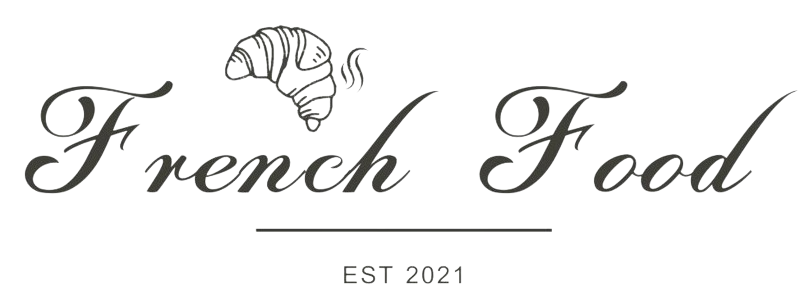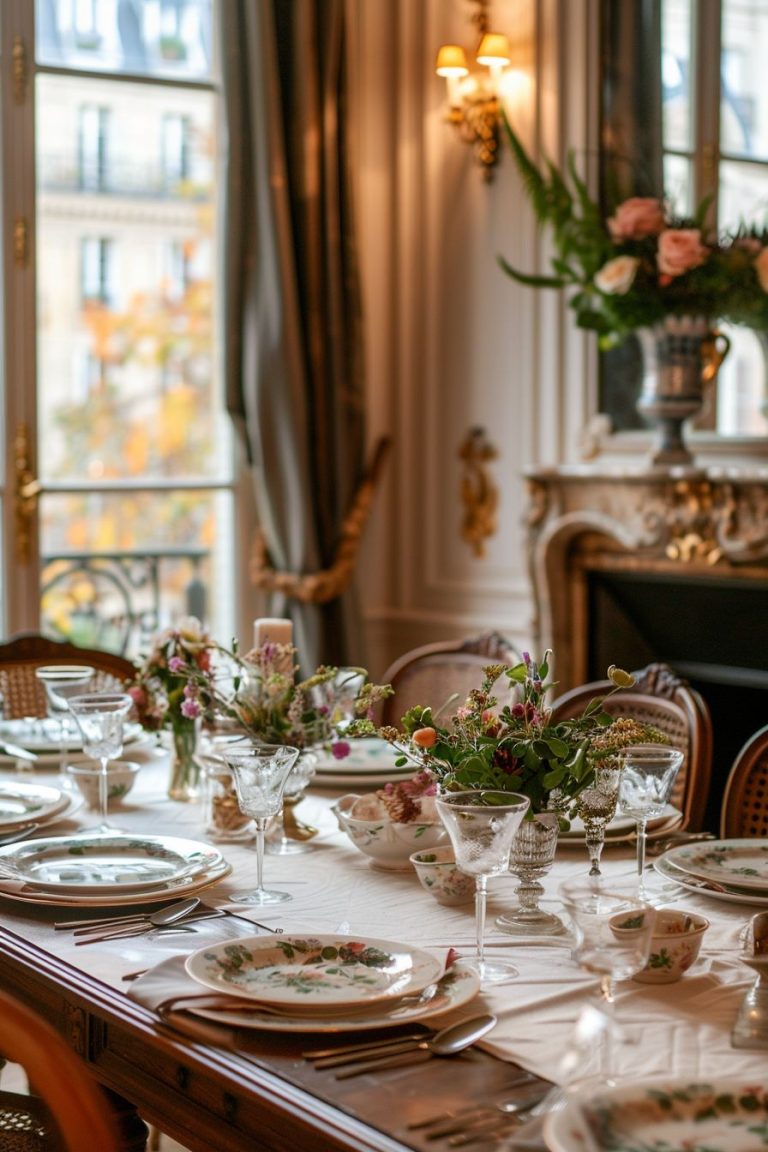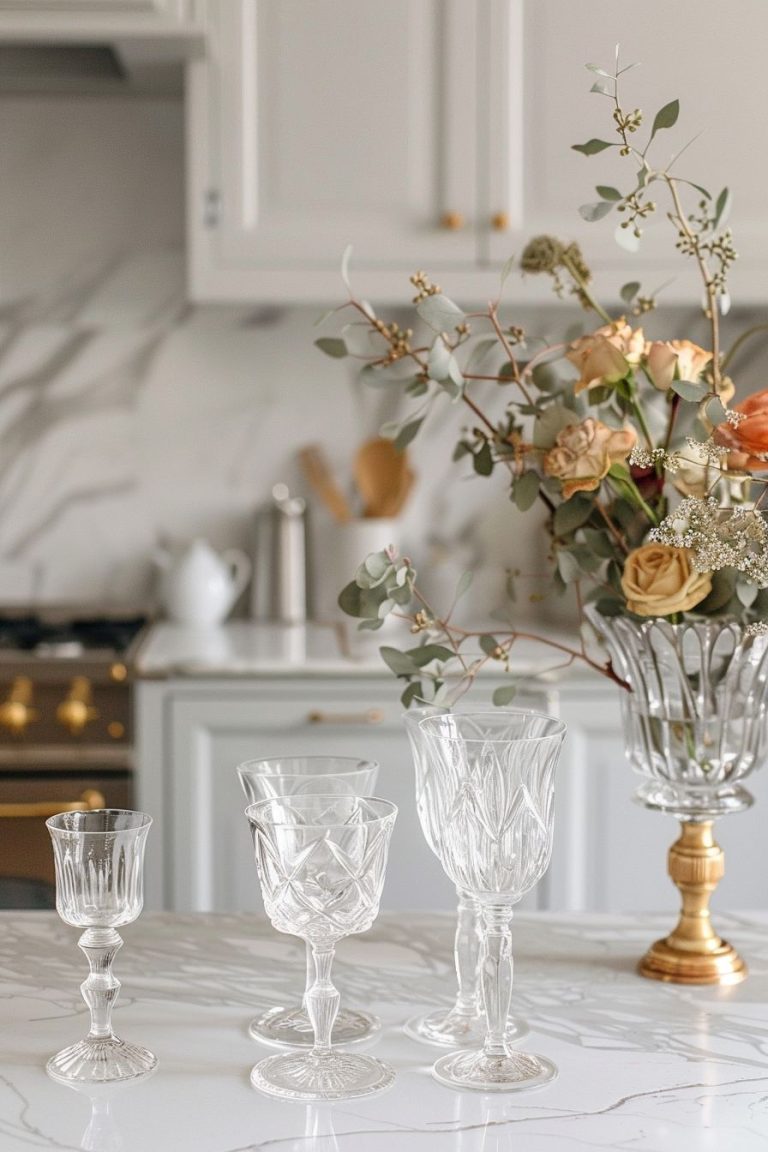How to Host a French Dinner Party or Shared Meal
We may earn a commission through all links on this website. As an Amazon Associate, we earn from qualifying purchases.If you’re looking to impress your friends and family with a French-themed dinner party, there are a few things you need to know! Here’s how to set the stage for a perfect French feast.
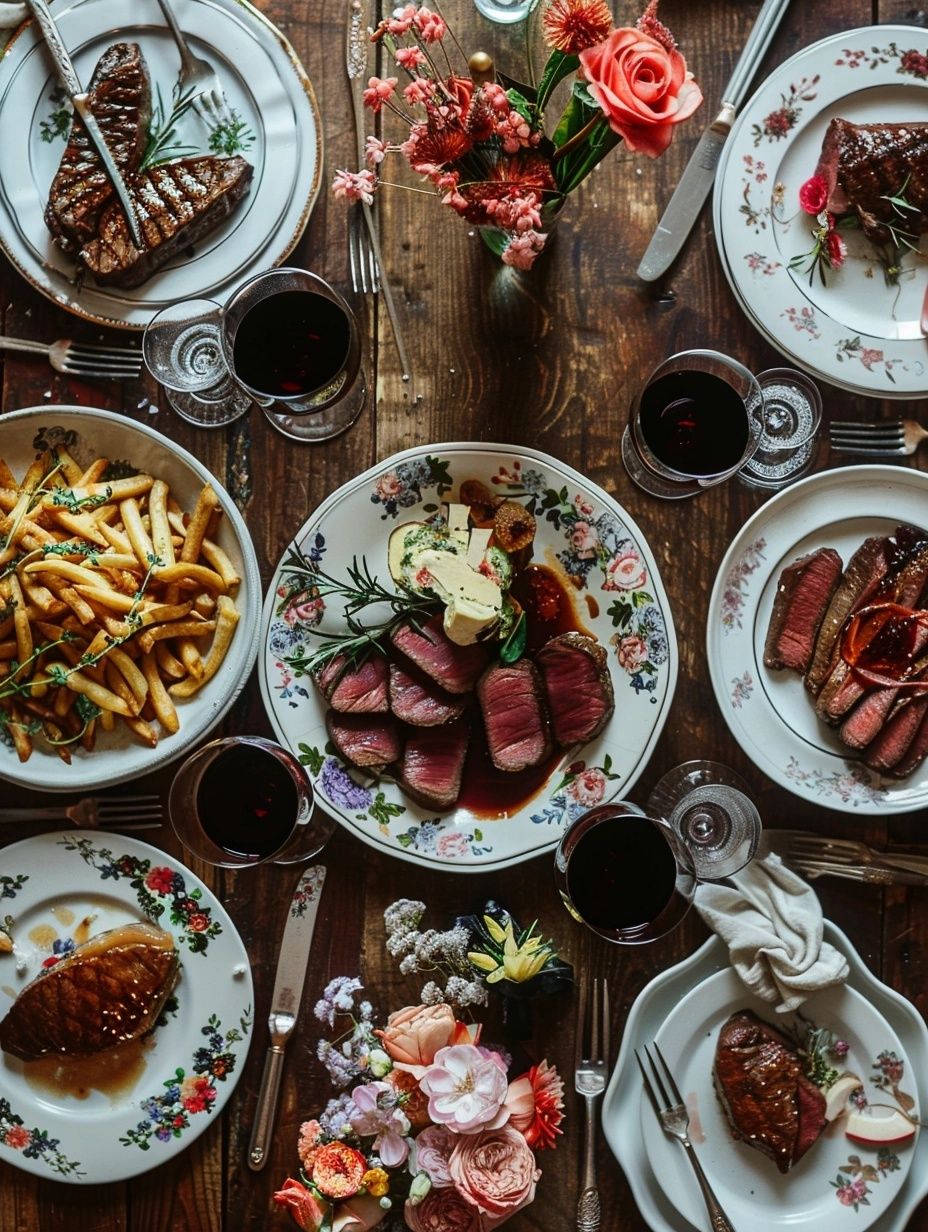
The art of hosting dinner parties is embedded in French culture. From the 18th century salons over dinner, to modern-day informal gatherings, the French absolutely love to host! Meals in France are meant to be shared and there’s nothing the French love more than to gather.
When it comes to French dinner party hosting etiquette, there are several customs to be aware of.
In this article, I’ll share some tips for both hosts and guests surrounding the customs and traditions of French dinner parties.
What Time to Start the Dinner Party
French dinner parties often start later than what we’re used to in the States. It’s not uncommon for dinner to be served around 8:30 or 9pm, so don’t be surprised if your French friends are a bit late to the party!
French Table Setting and Decor
As a host, the first thing you need to do is set the table. In France, the dining table is very often set with a simple white tablecloth. You’ll also need plates, forks, knives, and spoons for each course. For a French dinner party, it’s also traditional to have a bread basket on the table.
The French take great pride in their dining table setting and decor. The table should be set with care, using beautiful dishes, glassware, and cutlery. French table settings often include multiple forks, knives, and spoons for each course.
Here is a quick guide to French table setting:
- Knives and forks are typically placed to the right of the plate.
- Spoons and knives are placed in the order they will be used, with the first course at the outermost position.
- Forks are placed facing upwards, with the salad fork being the exception.
- Glasses are placed to the upper right of the dinner plate and include a water glass, a white wine glass, and a red wine glass.
- Napkins are placed to the left of the forks or on the dinner plate.
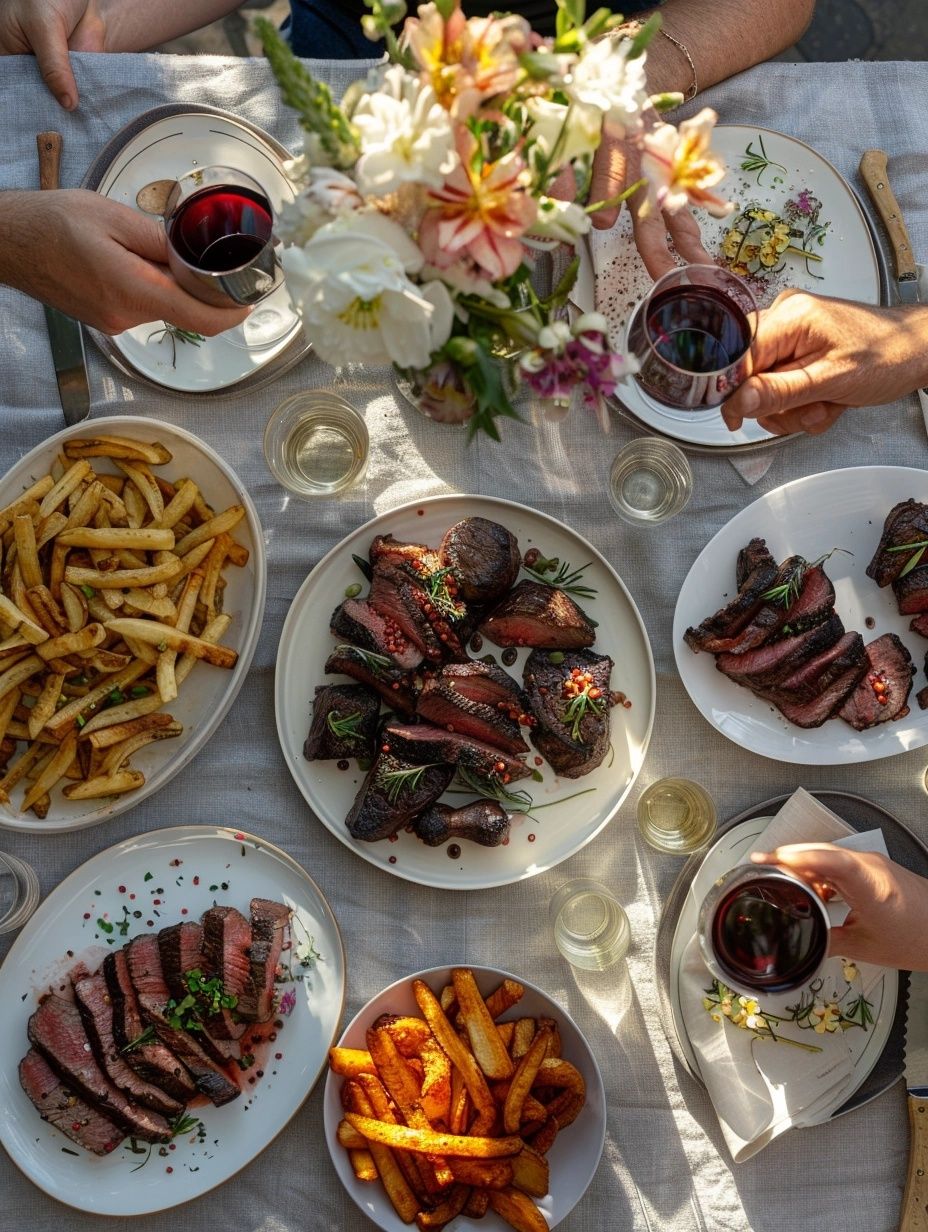
French Dinner Party Menu Ideas
When it comes to French dinner party menu ideas, the options are endless. French cuisine is rich and flavorful, so there’s sure to be something for everyone. Here are some French dinner party menu ideas and tips.
Begin with an Apéritif
When guests arrive, they should be greeted with an apéritif. This is a small alcoholic drink served before the meal to stimulate the appetite. French apéritifs include Kir Royales, Champagne, white wine, or even just a simple cocktail.
If you’ve ever flown Business Class on Air France, you know this French custom well. The flight attendants serve a small glass of orange juice or champagne before take-off to put passengers at ease and welcome them on board. The same tradition applies to dinner parties at Parisian apartments or French homes!
Bread is a French Staple
Bread is an important part of French culture and you’ll find it on the table at almost every meal. A French dinner party is no exception! French bread comes in all shapes and sizes, from baguettes to brioche. It’s customary to tear off pieces of bread with your hands to eat with the meal, rather than slicing it with a knife.
Starters – Entrées
French starters, or entrées, are meant to be small and light. They’re served before the main course to whet your appetite. French starters include soup, salad, charcuterie, and cheese.
- Soup: French soups are often cream-based and served with a piece of bread on the side. French onion soup is a popular winter choice, as is pumpkin soup or potato leek soup.
- Salad: French salads are typically composed of a mix of greens, vegetables, and protein. The salad is dressed with a vinaigrette made of oil, vinegar, and herbs. The Salade Niçoise is always a hit.
- Charcuterie: French charcuterie includes a variety of meats, such as ham, sausage, and pâté. French charcuterie is often served with cornichons (tiny pickles) and a baguette.
Main – Plats Principals
French main courses, or plats principals, are hearty and filling. French mains include meat, fish, and vegetables. French cuisine is known for its use of fresh, local ingredients.
- Croque Monsieur (a French twist on the classic ham and cheese sandwich)
- Coq au vin (a French chicken stew recipe that’s full of flavor)
- Boeuf bourguignon (a French beef stew recipe that’s perfect for a winter dinner party)
- Quiche Lorraine (a French quiche recipe that’s perfect for brunch or lunch)
Cheese – Fromages
The French love their cheese and it’s often served as a course between the main dish and dessert. French cheeses come in all shapes, sizes, and textures. Some typical French favorites include brie, camembert, and Roquefort cheese.
- Brie: Brie is a soft cheese that’s made from cow’s milk. It has a creamy texture and a mild, slightly sweet flavor. Brie is often served with crusty French bread and fruit.
- Camembert: Camembert is another soft cheese that’s made from cow’s milk. It has a stronger flavor than brie and is often compared to a ripe peach. Camembert is best served with crusty French bread or crackers.
- Roquefort: Roquefort is a blue cheese that’s made from sheep’s milk. It has a sharp, salty flavor and a crumbly texture. Roquefort is often served with French bread or crackers.
Dessert – Dessert
French dessert recipes are often rich and decadent. French desserts include cakes, pies, pastries, and ice cream.
- Crème brûlée (a French custard recipe that’s topped with caramelized sugar)
- Chocolate mousse (a French chocolate dessert that’s light and fluffy)
- Tarte Tatin (a French upside-down apple tart recipe that’s perfect for dessert)
Coffee – Café
Coffee is often served after dinner as a way to end the meal. French coffee is typically strong and served black. If you want something sweet, you can order a café au lait (coffee with milk) or a café mocha (coffee with chocolate). Be sure to offer other options such as tea infusions, French hot chocolate, or herbal teas.
Digestive Drink – Digestif
A French digestif is an alcoholic drink that’s served after dinner. French digestifs include cognac, brandy, and champagne. French digestifs are meant to help you digest your meal and they’re often served with a piece of candy.
Pair the Right Wine
Wine is an important part of French culture and it’s often served with meals. French wine comes in all different colors, from red to white to rosé. French wine is usually named after the region where it’s made, such as Bordeaux or Champagne.
There are many factors to consider when choosing the right wine for your French dinner party menu. You’ll need to take into account the type of food you’re serving, the color of the wine, and the price.
If you’re not sure what wine to serve, you can always ask your local wine shop for recommendations. Generally speaking, a good rule of thumb is to pair white wine with fish dishes and red wine with meat dishes.
Be sure to chill white wine or rosé for at least several hours before serving!
Refill Guests’ Glasses Throughout the Meal
In France, it’s considered rude to let your guests’ glasses go empty. As the host, it’s your job to make sure that everyone has enough to drink. You can do this by refilling glasses throughout the meal.
If you’re not sure how much wine to buy, a good rule of thumb is to plan on one bottle per person. This way, you’ll have enough wine to refill glasses throughout the meal and you’ll also have some left over for your guests to take home.
Et voila! Congrats, you just mastered the French art of entertaining. Good luck on hosting your first French dinner party!
